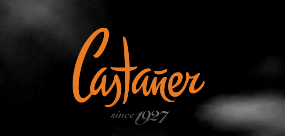The story of Barcelona fashion designer Andrés Sardà follows the ascendant arc of his city’s fashion industry, from regional producer of utilitarian clothing to international fashion hub.
In 1898, his father Baldomero sold church headscarves known as mantillas españolas. After they went out of style, Andrés Sardà launched an underwear company in 1962. The aim was to produce garments that were beautiful, not just functional. By 2007, his company was selling €13m of high-end lingerie and swimwear a year; it was recently named Designer of the Year at the Salon International de la Lingerie in Paris – the second time it has won the coveted award.
…
When twins Aitor and Iñaki Muñoz arrived in Barcelona to study fine arts in 1990, they found a city reinventing itself for the 1992 Olympic Games.
The brothers soon shifted to clothing design, and the brand they founded, Ailanto, has won fans for its use of geometric forms and avant garde art references. Last year, they sold about 5,000 garments (a typical dress retails for €240), and designed the new uniform for the staff of the Guggenheim Museum in their home town of Bilbao.
“When we go to the shows in Paris and they ask you where your brand is from and you say Barcelona, it’s a plus,” says Aitor, 46.
Though the area’s fame is new, fashion has a long history in Barcelona. A century ago, its working class suburbs were home to a huge textile industry.
“It was the Bangladesh of Europe, with low cost production of everything textile,” says José Luis Nueno, a professor at Barcelona’s Iese Business School who studies fashion.
Later, the city became the country’s centre for Moda Pronta, a predecessor of Fast Fashion in which designers went to Paris to copy designs and turned out replicas in Spain.
Today, a handful of international giants dominate Barcelona’s fashion industry. After a turnround in which it cut prices and turned to casual clothing, locally based Mango, founded in 1984, had 2012 revenues of €1.7bn. Desigual, the Barcelona maker of colourful fashion whose slogan is “Life is cool”, had 2013 sales of €828m.
…
The Catalan government has helped local fashion businesses to become more international. In the past three years, it has taken more than 30 companies and designers on trade missions to countries such as Russia, Colombia and India. In Colombia, for example, seven local designers staged a version of the 080 Barcelona Fashion show.
“The clearest difference is between those who had a majority of their sales in Spain versus those who sold outside,” says Mr Rodríguez. “Those who are recovering most are those who had begun to internationalise.”
If Barcelona gets its next steps right, says Custo Dalmau, co-owner of a local fashion group known for its colourful shirts, the city “could rival Milan”.
Article published by Ian Mount in The Financial Times. March 30, 2014.
To read the full article, please click on the following link: http://www.ft.com/cms/s/0/30fb04fa-b021-11e3-b0d0-00144feab7de.html#ixzz355VP6iZO



